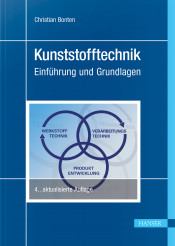Veranstaltungsdetails
Konferenz vom 17.06.2008 bis 18.06.2008
Ort/Land: Köln, Maritim Hotel, Deutschland
Kontakt: Dr Sally Humphreys (sh@amiplastics.com)
Polymers for manufacturing medical devices – the latest developments
Advances in the last century have radically transformed medical care. It was only in the 1920s that blood transfusion started to become commonplace when the Red Cross members volunteered donations. The medics had understood the science of circulation since William Harvey in 1628 and Karl Landsteiner discovered blood groups in 1901, but it took the development of medical devices to store and transfuse blood for this information to be used in effective treatment. In the 1960s an Indian hospital technician watching his bicycle tyre being repaired, went back and tried the same technology on an artificial foot – still available as the Jaipur foot.
Today, device development is much more rapid with high performance thermoplastics and elastomeric materials offering ease of manufacture and decades of safety testing in different medico-pharma applications. One of the latest circulatory devices is the Berlin heart, developed to sustain children waiting for a heart transplant.
A new UK company, Medical Device Innovations is providing a unique link between clinicians and the medical device companies, taking ideas and making them work. Bioengineers, such as Hamid Rassoulian at Southampton Hospital, have been developing and testing medical devices. Balda Medical develops custom medical devices and packaging. MDT Medical Device Testing offers shelf-life and other testing for the industry. Medical grade polymer materials are available from companies such as DuPont Engineering Polymers, BASF, LyondellBasell, Ineos Polyolefins, Momentive Performance Materials and SABIC Innovative Plastics. Aramids are very high performance materials – Teijin Aramid has developed rods to replace stainless steel in devices such as angioplasty catheters.
Processing can affect the properties of end-products and expertise is required in the medical moulding and extrusion, as developed by Husky Injection Moulding. The IKV has state of the art research into moulding resorbable polymers with incorporated antibiotics – a difficult low temperature procedure – to give bone scaffold implants. Micro injection moulding is a hot topic for medical – Cardiff University has conducted systematic tests on a range of polymers and their suitability for this process. Economics are important – this has been studied by Netstal – and Waldorf-Technik has automation systems.
Plastics can be modified with additives to give tailor-made properties. RTP has developed anti-static compounds for inhalers, for example, to improve drug delivery. Clariant Masterbatch has a range of biocompatible coloured materials for medical applications. Wittenburg has a range of medical TPE compounds. Toxicology is a critical consideration in additive selection – Dr Rainer Otter has been studying this aspect. Professor Jim Courtney at Strathclyde has worked on the testing of PVC compounds in contact with blood and is a world expert in plasticisers including the phthalate issues. Tekni-Plex has a new co-extruded PVC-free film for infusion pouches, to avoid some of this controversy.
Medical Moulding & Extrusion 2008 is the third international medical device manufacturing conference organised by Applied Market Information Ltd. It provides a forum for the medical industry to discuss medical device development and manufacturing. It takes place from 17-18 June at the Maritim Hotel on the banks of the Rhine in Cologne, Germany.
(Beschreibung nach Veranstalterangaben)
One Brunswick Square (Third Floor)
BS2 8PE Bristol
Email: info@amiplastics.com
Tel.: +44(0)117 924 9442
Fax: +44(0)117 311 1534





 Wir informieren Sie schnell, umfassend und kostenlos über das, was
in der Branche passiert.
Wir informieren Sie schnell, umfassend und kostenlos über das, was
in der Branche passiert.

